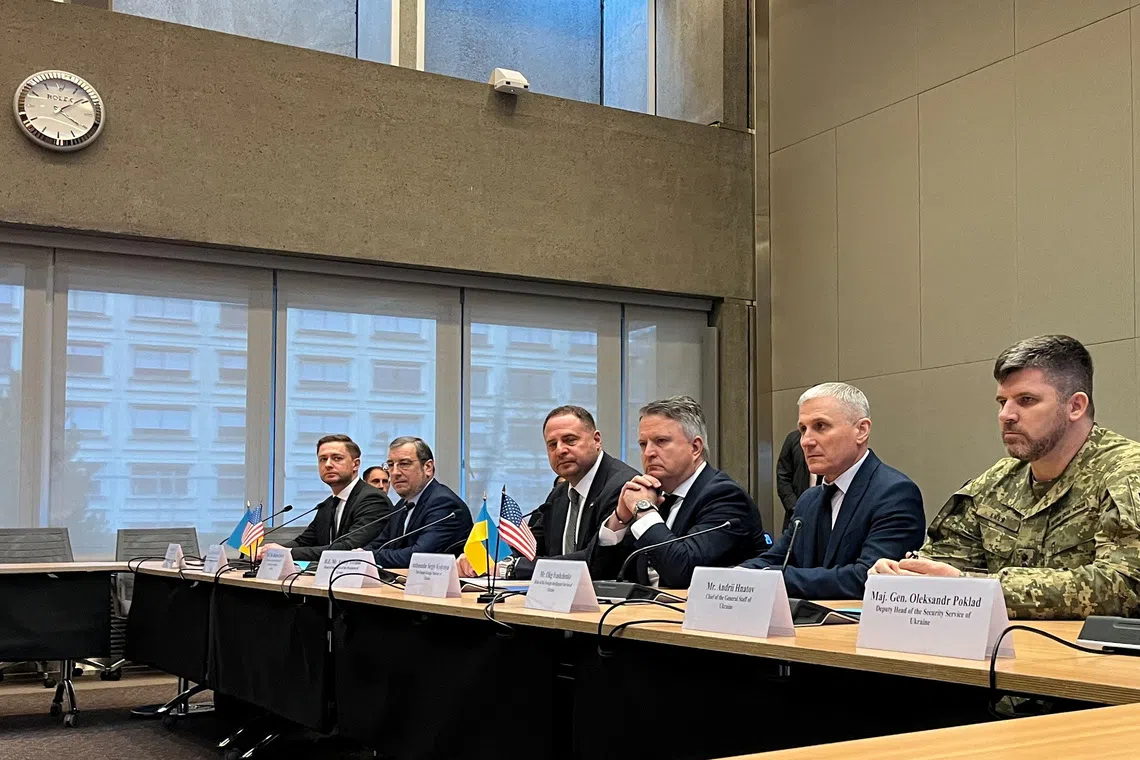Europeans propose changes to US Ukraine plan with higher army cap, Nato-style security pact
Sign up now: Get ST's newsletters delivered to your inbox

Ukrainian delegation, headed by presidential advisor Andriy Yermak before closed-door talks with a US delegation at the US Mission in Geneva, Switzerland.
PHOTO: REUTERS
Follow topic:
BRUSSELS - Europeans have submitted a modified version of the United States' peace plan for Ukraine that pushes back on proposed limits to Kyiv's armed forces and territorial concessions, according to a document seen by Reuters on Nov 23.
The document, prepared for talks on the plan in Geneva, proposes that Ukraine's military be capped at 800,000 "in peacetime" rather than a blanket cap of 600,000 proposed by the US plan.
It also says "negotiations on territorial swaps will start from the Line of Contact", rather than pre-determining that certain areas should be recognised as "de facto Russian", as the US plan suggests.
The counter-proposal was drafted by the so-called European E3 powers - Britain, France and Germany, a source familiar with the document said.
The document takes the US proposal as its basis, but goes through point by point with suggested deletions or changes.
It proposes that Ukraine receive a security guarantee from the United States similar to Nato's Article 5 clause.
It pushes back on the US proposal for the use of Russian assets frozen in the West, primarily in the European Union.
"Ukraine will be fully reconstructed and compensated financially, including through Russian sovereign assets that will remain frozen until Russia compensates damage to Ukraine," the document says.
The US plan proposed that US$100 billion (S$130.6 billion) of frozen Russian funds would be invested in a "US-led effort to reconstruct and invest in Ukraine" and that the US would receive 50 per cent of the profits from that venture.
The US also proposed that the balance would be invested in a "separate US-Russia investment vehicle". REUTERS

